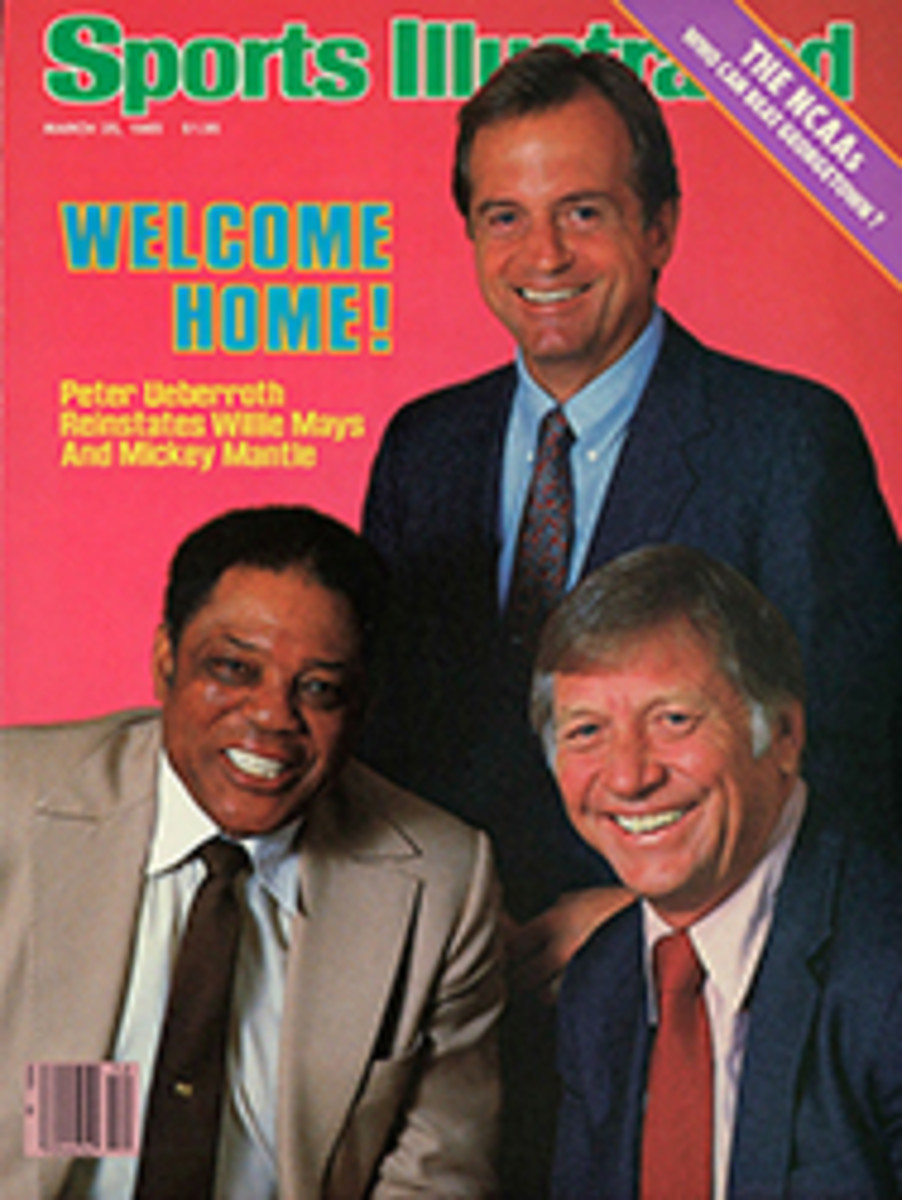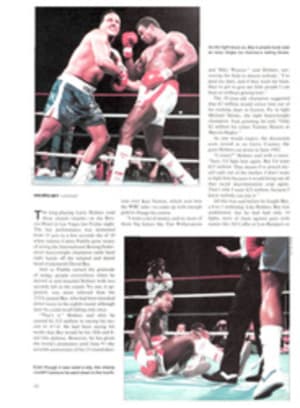
They're bound to rebound
I had to learn how to separate baseball from my life," Dodger relief pitcher Steve Howe says. "If you think your worth as a person is tied up with baseball and think about it 24 hours a day, and if this is taken away, what do you do?"
Howe has come to grips with himself. He has an addiction to cocaine—not had, has. But now, one day at a time, just as they tell you at the meetings, he is staying clean and trying to reclaim a career.
Howe was suspended for the entire '84 season after he failed to control his addiction during '83. He is coming back from Jan. 9 surgery to re-route the ulnar nerve in the left arm that had made him one of the National League's best short relievers. So far, so good. He's scheduled to throw batting practice this week, and he predicts he'll be in the bullpen when the season starts. "I don't look to start the season on the DL," he says. "No way."
Told he seems hyper, Howe replies, "I'm real hyper. But now I know how to relax because I've learned how to separate baseball from my life. And I know I can't go back to my past. I can never go back."
Later he says, "I was the number-one son. I felt I had to be perfect. I placed my goals so high that they were unattainable. These goals drove me nuts."
Howe tells a story of a father who's trying to read the evening paper and the son who wants to play. The son keeps pestering the father until he finally takes one page from the paper, tears it into bits and tells the son that they'll play when the page is put back together. A few minutes later the son returns with the page taped together. How, the father asks, has he done that? Easy, says the son. There was a picture of a man covering the other side of the torn page.
"See," Howe says, "if you put the man together, the whole world falls into place. You put the man together first."
Dickie Thon had it all. He was young (25), he was talented (a .286 average, 20 homers, a league-high 18 game-winning hits in 1983), he was going to be an All-Star shortstop for the Astros for 10 years. Horizon unlimited. Then, on April 8, 1984, in the sixth game of the season, a baseball he never saw, thrown at about 90 miles an hour by the Mets' Mike Torrez, caved in the left side of Thon's skull, severely damaging his eye.
"The lowest moment for me," he says, "was right after I got hit. I remember telling my wife, 'I'm not going to play again.' "
He didn't play again last season, and had to abandon winter ball in Puerto Rico after three games because of a disagreement with his team's owner. Will Thon play again? He's back in spring training with the Astros, and his numbers are promising: eight hits in his first 21 at bats. But he says the ball sometimes appears "a little fuzzy."
Houston team doctor Bill Bryan says the ball appears "a little fuzzy" to Thon because of some small holes in his left retina that can't be repaired surgically.
"The brain is amazing," Bryan says. "It can let the other eye compensate. But we all know how small the difference can be between being a mediocre hitter and a very good one. If his performance is mediocre the first part of the season, I wouldn't be disturbed, but by July I think we should know." And what does he guess? "I have to admit I have some reservations that he'll be as good as he was."
The first time Bob Horner, the 27-year-old Atlanta slugger, stepped into the batting cage this spring, he watched three straight pitches, all hittable, sail by. "I was scared to death," says Horner, who is trying to come back from an intricate operation on his right wrist. "I had butterflies from my head to my feet. I was talking myself into letting the ball go."
In August 1983 Horner broke the navicular bone in his right wrist and missed the rest of the season. He re-broke the same bone last May and again missed the rest of the season. When the doctors removed Horner's cast late last October, they told him he needed still another operation, one that would sideline him for all of '85.
Horner balked. His agent, Bucky Woy of Dallas, had heard about a local orthopedic surgeon, Peter Carter, who was using a new technique developed in Australia. Horner visited Carter, who told him he wouldn't know if the operation was feasible until he started cutting and that there was only an 80% chance of success. That was good enough for Horner, who underwent surgery a week before Christmas. Debris was removed from the broken navicular and replaced by a piece of bone from his pelvis and secured by a titanium screw.
"No way I'm gonna miss another season," Horner said. "I'm gonna take any chance I can."
That gamble may pay off. Horner has yet to play an exhibition game, and he still needs to strengthen the muscles in his right arm and hand, but the wrist is in working order again, even if some stiffness and swelling remain.
"There's no question in my mind I'll be there Opening Day," he says. "I never asked, 'Why me?' because I figured I'm young enough, given the right circumstances, to bounce back."
George Brett never concerned himself with much more than his next base hit, his next conquest and his next cheeseburger. One look told you that. But now, all of a sudden, Brett is lean and hard and, at age 31, in the best shape of his life.
This New & Improved Model weighs 190 pounds, 20 pounds less than in '84. The new Brett hopes he'll be more durable and less injury prone than the old Brett. Last year Brett hit a mere .284 and limped through September with a torn hamstring. He became a starter with an asterisk: If the Royals were ahead late in the game, out came Brett and in went a better fielding third baseman.
"I was miserable. It reached the point where I almost felt like an outsider, like I wasn't a part of the team," Brett says. "I'd do my job and I'd be out. It was the worst year of my career."
Brett missed 58 games last season and 239 overall since 1977. Late last season K.C. co-owner Avron Fogelman and G.M. John Schuerholz told Brett they were upset about his cavalier approach to conditioning and suggested that some injuries might have been avoided had he been in shape.
So Brett radically changed his diet—fish, poultry, fruit and veggies were in, red meat, fried foods, alcohol were out—and hired an old high school friend to lead him through a strenuous daily workout program. Brett dropped those 20 pounds, and his body-fat content went from 10.1% to 7.1%. Manager Dick Howser worries that Brett has lost too much weight.
"I've reached the age where I have to come to spring training in shape," Brett says. "I used to do the bar scene. If I had to stay out all night to meet someone, I would. Sometimes, Whitey [Herzog, his manager from 1975 to '79] would see me and laugh. He used to say I'd be 40 before I was 30, but what could he do? I was hitting .320. But now if I mess around, my body lets me know it. Anyway, I think I maxed out on the bar scene."
PHOTO
CRAIG MOLENHOUSE
Reliever Howe has to beat his addiction to cocaine and also rehabilitate his left arm.
PHOTO
CHUCK SOLOMON
Pitches sometimes appear to be "a little fuzzy" to Thon.
PHOTO
MICHAEL O'BRYON
Horner twists his wrist in uncooked rice.
PHOTO
CHUCK SOLOMON
The slimmed-down Brett would like to have a beefed-up batting average.
THREE ILLUSTRATIONS

